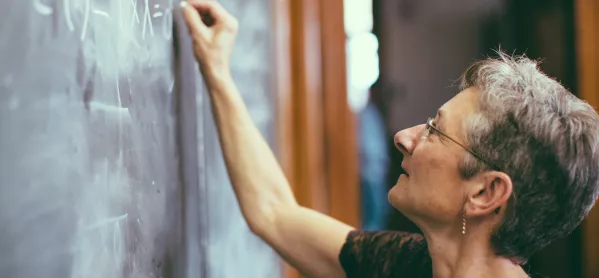- Home
- School reopening plans in Scotland: what we learned
School reopening plans in Scotland: what we learned

First minister Nicola Sturgeon today announced that Scottish teachers would return to school next month and that schools would reopen for pupils in August.
Below are key points from her statement and the questions that followed, as well as additional information contained in documents published by the Scottish government.
It is important to note, however, that Ms Sturgeon stressed that her proposals for easing the lockdown - a process that she said would happen in five stages - were “not set in stone” and that she would “only open schools when it is safe to do so”.
- Teachers and other school staff will return “at some point during June”.
- Pupils at “key transition points” - such as those due to start primary or secondary - might get some “in-school experience in late June, so that they are fully supported to make the next steps in their education”.
- Pupils will return on 11 August but “almost all children and young people will experience a blend of in-school and in-home learning”, due to physical distancing measures.
Background: New plan shows how Scottish schools could reopen
Teaching union take: The biggest curriculum challenge of the century?
Coronavirus: Scottish teachers want safety assurances before return
Reopening schools: How are other countries doing it?
School closures: What’s life really like for pupils in lockdown?
- Most pupils will spend around half their time in class and half learning at home.
- The 11 August start for 2020-21 will mean an earlier than planned start for most; teachers will agree locally “when lost holiday time should be taken back”.
- Childcare hubs - which are usually schools - will remain open in May, June and over the summer holidays “to ensure ongoing provision for key worker and vulnerable children”.
- Local authorities have been told to increase the numbers of vulnerable children attending hubs.
- Parents will find out the timetable their children are going to follow when they return in August over the summer; the “optimal” pattern of attendance - for example, whether pupils attend for part of a week, or have one week on and one week off - will be determined by schools and councils.
- An approach to digital learning will be implemented that will “specifically focus on providing digital access for pupils who do not have this at present”. Initially, £9 million will be spent on 25,000 free laptops - bundled with a free internet connection - to be given “to pupils who need it”.
- Councils should look to use other buildings for learning, not just schools - “to maximise their capacity for pupils to benefit from in-school learning” - including outdoor spaces; libraries; community halls; leisure centres; using stadia or conference venues; and vacant business accommodation.
- The General Teaching Council for Scotland (GTCS) and local authorities are looking at ways “to supplement the existing [teaching] workforce” and this could include “calling on former teachers to return to teaching during the crisis”, either in classrooms or virtually to support in-home learning.
- Children of keyworkers should be prioritised by schools and some could be in school full-time; “remaining in school provision should be distributed across all year groups”.
- Details of the certification process for pupils sitting national qualifications next year will be “confirmed in due course”.
- The Scottish Qualifications Authority (SQA) will provide advice to schools “to ensure that appropriate arrangements are in place to capture, on an ongoing basis, the learning outcomes met by pupils in the senior phase. This will provide a strong evidence base to support assessment and certification”.
- Education Scotland will deliver new national digital learning resources to support schools’ own arrangements.
Register with Tes and you can read two free articles every month plus you'll have access to our range of award-winning newsletters.
Keep reading with our special offer!
You’ve reached your limit of free articles this month.
- Unlimited access to all Tes magazine content
- Save your favourite articles and gift them to your colleagues
- Exclusive subscriber-only stories
- Over 200,000 archived articles
- Unlimited access to all Tes magazine content
- Save your favourite articles and gift them to your colleagues
- Exclusive subscriber-only stories
- Over 200,000 archived articles



